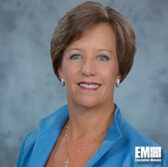
Rebecca Cowen-Hirsch, senior vice president of government strategy and policy for Inmarsat Government, has said she believes an integrated satellite communications architecture should incorporate industry’s technological advancements to change the cultural misperception about military and commercial satcom.
“For space programs, it remains imperative to incorporate advancements from the commercial sector into the baseline [Defense Department] architecture as a means of reducing strains on an overstretched budget and inserting optimum capability, flexibility and resilience for end users,†Cowen-Hirsch wrote in an article for MilsatMagazine.
“Ease of operation in a complex operational environment is required, and SATCOM must be readily accessible wherever they go; employing smaller, agile, easy-to-use equipment and multi-band terminals to ensure systems stay up and running no matter how challenging the situational or geographic conditions, or mission priority,†she added.
Cowen-Hirsch noted the adoption of a unified satcom architecture that is backed by an innovative acquisition process and strategic planning would help advance the “cultural shift to centralized management and decentralized execution of SATCOM.â€
“Taking this unified architecture approach will enable the DoD to consider MILSATCOM and COMSATCOM as a holistic capability to best support military missions,†she said.




